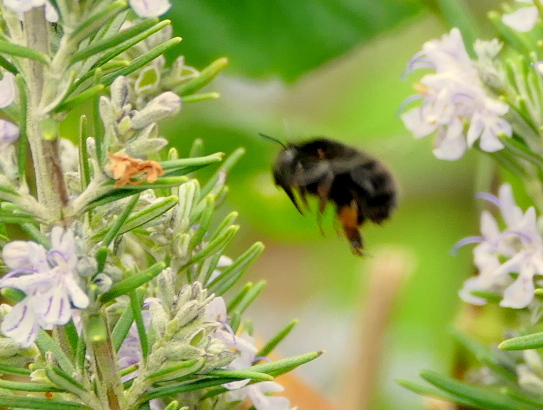Holly blues were feeding on Marjoram and a few common blues were about.
A Common Carpet moth was disturbed and hid under a Marjoram leaf. It did not escape my camera lens though.
A few hundred meters along a dry track is a fabulous meadow for insects.
A Clouded Yellow butterfly flew rapidly past, stopping only briefly to refuel. Frustratingly it did not open its wings on such stops so we can't see the vivid yellow and black upper wing surfaces.
Dozens of Common blue butterflies were on the wing; above a female (left) and a male (right).
Some were mating, as were Meadow Browns but they flew away as I approached them.
Above is a somewhat battered Meadow Brown female.
This is a Large Skipper.
A male Brimstone,
and a Comma.
And now today to Brockham Quarry.
Brockham Limeworks lies within the Surrey Hills Area of Outstanding Natural Beauty. It has been designated a Site of Special Scientific Interest (SSSI) because of its unique wildlife habitats.
According to http://www.surreywildlifetrust.org/reserves/brockham-limeworks; Decades of industrial chalk quarrying have shaped the land, and many of the plants only exist because of the chalk. The old chalk quarry lies within the centre of the site.
Once the area bustled with activity. A network of narrow gauge rail tracks carried the chalk to two batteries of lime kilns. Here the chalk was burned to produce quick-lime, used to make mortar and fertilisers. The site reached its peak at the end of the Victorian times and digging continued until 1936. Since then the deep scar in the landscape has gradually been reclaimed by nature.
The chalk face reflects sun light into the quarry and helps to maintain a warmer ambient temperature than the surrounding countryside. This is beneficial to the many butterfly species found on site. Of particular interest is the silver-spotted skipper which is found at only a few sites in the south of England.
Today a silver-spotted skipper posed for me just as we were leaving this site.
Its wing edges are a little damaged but is wonderful nonetheless. Click here for more Silver-spotted Skipper info' from Butterfly Conservation.
Thank you Surrey Wildlife Trust for such glorious reserves; these two within a few miles of the M25 London orbital motorway. Who would have believed it?

No comments:
Post a Comment